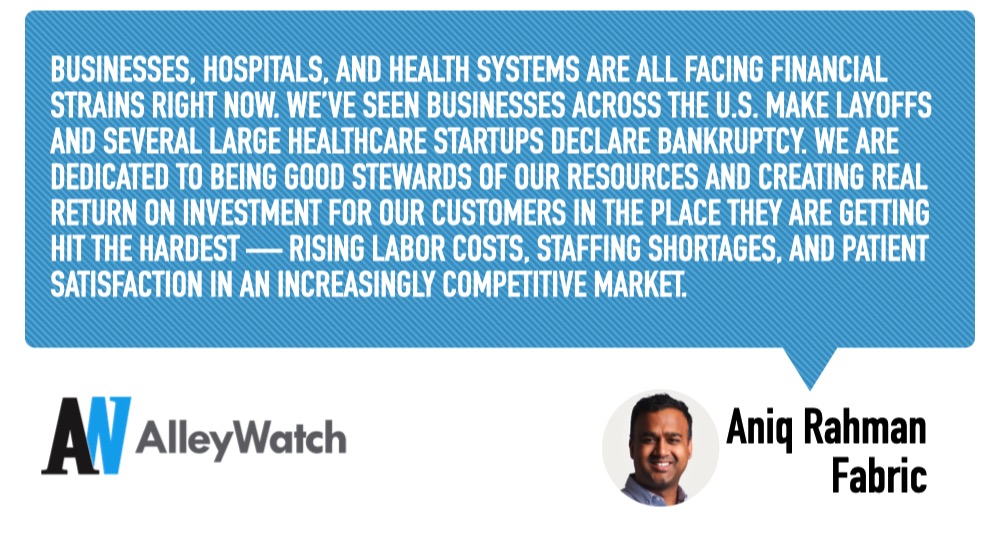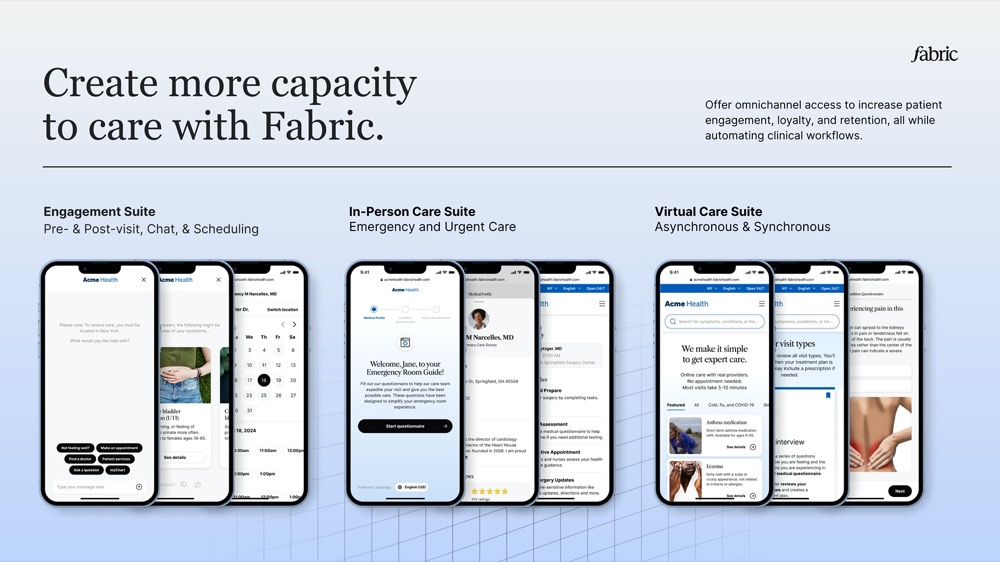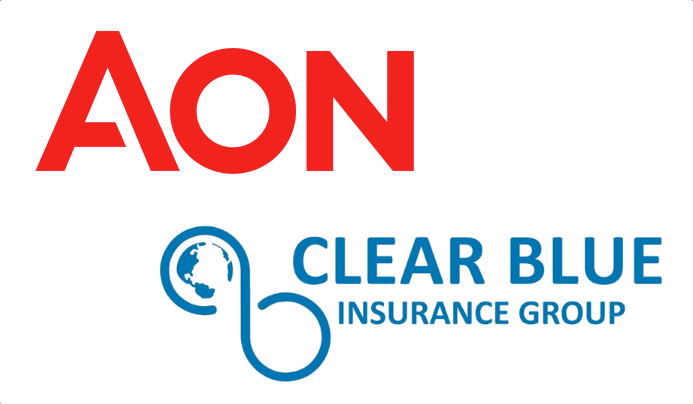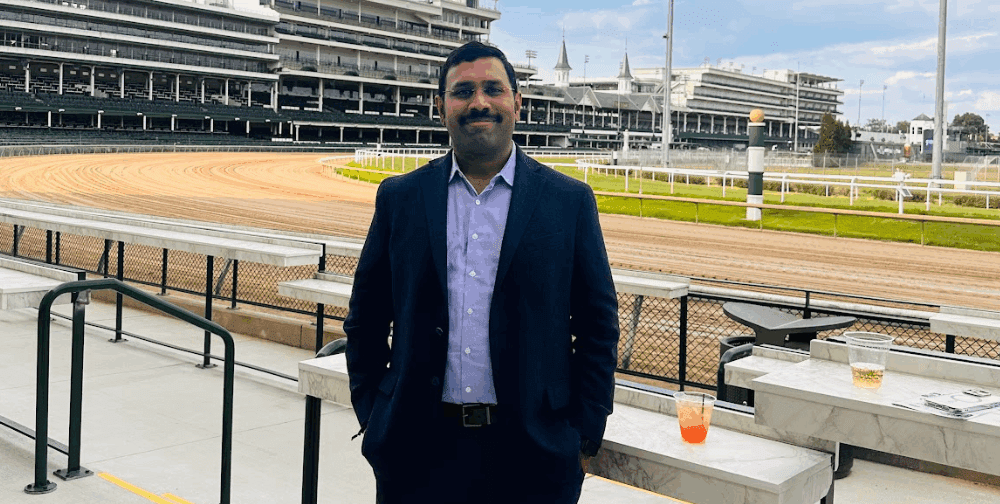The average wait to be treated in the emergency room in New York is a whopping 3 hours and 21 minutes. Prolonged wait times led to adverse medical outcomes, reduced quality of care, and the Institute of Medicine calls it a “national epidemic”. One of the main hurdles is the burdensome administrative intake process for patients that needs to be repeated for an influx of patients. Fabric is a care enablement system that streamlines the patient care process and workflows with conversational AI and automation. The platform, a hybrid of in-person, virtual, and engagement solutions handles intake, triage, routing, and treatment, freeing up healthcare providers, and allowing them to work 2-10x faster. At a time when there is an acute shortage of healthcare workers that is being compounded by the increased risk of burnout and departures as a result of work overload, Fabric is not only improving retention and allowing clinicians to focus on delivering care, the platform also seeks to reduce costs that are spiraling out of control with healthcare expenditures accounting for just under 20% of the total GDP of the US.
AlleyWatch caught up with Fabric Founder and CEO Aniq Rahman to learn more about the inspiration for the business, the company’s strategic plans, latest round of funding, and much, much more…
Who were your investors and how much did you raise?
We raised a $60M Series A led by General Catalyst with continued participation by existing investors Thrive Capital, GV (Google Ventures), Salesforce Ventures, Vast Ventures, Box Group, and Atento Capital. This brings our total capital raised to $80M.
Tell us about the product or service that Fabric offers.
Fabric is a health tech company that powers healthcare providers to move faster, work smarter, and deliver better care through its care enablement system. The system offers three solutions: In-Person Care Suite, Virtual Care Suite, and Engagement Suite. Leveraging conversational AI and intelligent adaptive interviews, Fabric unifies virtual and in-person care across intake, triage, routing, and treatment while automating workflows for staff. Built by a team of physicians and clinical informaticists, Fabric protocols uphold excellence in care quality while offering omnichannel access for patients. The results enable clinicians to work 2-10 times faster (dependent on setting), decrease call center volume by 30%, and increase utilization of unfilled visit blocks.
What inspired the start of Fabric?
I’ve been an active tech founder and healthcare investor. Prior to starting Fabric, I was President of Moat, which Oracle acquired for $850M in 2017.
Then in 2018, my father had a heart attack. Fortunately, the health system saved his life, but the process left me with a new perspective. While in the hospital with my father, I witnessed firsthand the heroic efforts of healthcare professionals who save lives every day—as well as the complexity and inefficiencies of the hospital environment, which was largely caused by outdated technology, siloed systems, and bureaucratic red tape.
As a result, we have assembled a team with diverse backgrounds, spanning both consumer and enterprise industries, to create experiences that would match the ease and convenience of services of consumer companies like Spotify and Uber for healthcare organizations. Our goal was to create a truly end-to-end experience that allows our partners to replace fragmented point solutions, streamline patient and provider experiences, increase access to care, and improve clinical outcomes.
We chose the name Fabric because the healthcare system is made up of dozens of strands that, unfortunately, don’t always work efficiently together. But when those threads are woven together, they form a fabric that wraps together patient and provider, virtual and in-person clinical care.
How is Fabric different?
Fabric is unique in that we are an end-to-end care enablement platform designed to solve today’s greatest challenges—including provider capacity constraints, fragmented care, and clinical inefficiencies. We believe in-person care is the heart of healthcare, and we leverage the power of technology to create an efficient hybrid care model that ensures the patients who need in-person care can get it.
Engineered to enhance clinical workflows, Fabric automates 99% of administrative tasks in virtual settings, empowering healthcare providers to treat patients in 89 seconds and increase their efficiency up to tenfold. In physical points of care, Fabric can increase efficiency by 200% and shorten ER visits by more than 20 minutes when measured from room to discharge.
Fabric’s physician-curated expert system and cutting-edge technology are based on clinical best practices and maintained by Fabric’s team of MDs, NPs, and RNs. It incorporates invaluable insights from our Clinical Quality Advisory Council, a group of 14 chief medical officers and medical directors, while leveraging advanced conversational AI to refine and streamline healthcare processes. This strategic integration not only enhances efficiency but also upholds the highest standards of patient care.
What market does Fabric target and how big is it?
We’re in the health technology market, which was valued at $663B in 2023, and more broadly address the rising cost of care that now totals $4.5T in annual spend in the US alone.
What’s your business model?
Fabric is an enterprise software company. We sell technology to payers and healthcare providers, including health systems, primary care, surgery centers, and urgent care centers.
How are you preparing for a potential economic slowdown?
Businesses, hospitals, and health systems are all facing financial strains right now. We’ve seen businesses across the U.S. make layoffs and several large healthcare startups declare bankruptcy. We are dedicated to being good stewards of our resources and creating real return on investment for our customers in the place they are getting hit the hardest — rising labor costs, staffing shortages, and patient satisfaction in an increasingly competitive market.

What was the funding process like?
Despite the difficult market environment for fundraising, we had a very competitive and exciting set of potential partners to work with for our Series A and had a significantly oversubscribed round. We could not be more excited to be partnering with General Catalyst as our Series A lead.
What are the biggest challenges that you faced while raising capital?
We had a lot of inbound interest from great firms and relationships, so were fortunate to have an efficient process. General Catalyst is a firm we have known and respected for years.
However, the healthcare sector is complex and dynamic and many venture investors either don’t invest actively in the category or take a very narrow lens at the types of deals they will do in the space. Selling software to health systems in particular is a niche that many VCs avoid due to long sales cycles and complicated integrations.
What factors about your business led your investors to write the check?
We are very mission-aligned with our investors. I am excited to partner with General Catalyst on their Health Assurance initiative—creating a more proactive, affordable, and equitable system of care. Summa Health, their pending acquisition, has been our partner since 2017. General Catalyst’s investment in Fabric represents their belief in the transformative power of technologists, caregivers, and capital.

What are the milestones you plan to achieve in the next six months?
We see the immense potential in artificial intelligence and healthcare, and so we’re dedicating funds to advance AI capabilities on our platform to enhance customer efficiency. We’ll pursue acquisition opportunities and strategic mergers aligning with our vision for a comprehensive care enablement system. Our recent acquisition of GYANT is a prime example of the moves we are making in that area.
What advice can you offer companies in New York that do not have a fresh injection of capital in the bank?
Funding in health tech is at its lowest level in the past half decade, so if you’re having a hard time securing venture funds, shift your focus to angel investors, family offices, and foundations that make direct investments.
Where do you see the company going now over the near term?
We’re allocating funds from our latest raise toward growing our team and continuing to advance our care enablement system to drive automation in healthcare for more human care.
I plan to expand our internal resources. A year ago, we had a team of about 10 people — now we’re at about 130. We’re looking to potentially double our size over the next year.
What’s your favorite winter destination in and around the city?
The winter market and ice skating in Bryant Park is always a winter highlight!









































